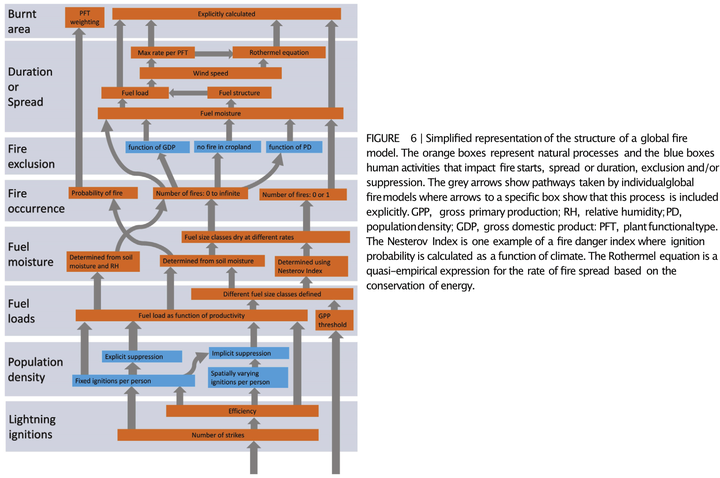Modelling human-fire interactions: combining alternative perspectives and approaches

Abstract
Although it has long been recognised that human activities affect fire regimes, the interactions between humans and fire are complex, imperfectly understood, constantly evolving, and lacking any kind of integrative global framework. Many different approaches are used to study human-fire interactions, but in general they have arisen in different disciplinary contexts to address highly specific questions. Models of human-fire interactions range from conceptual local models to numerical global models. However, given that each type of model is highly selective about which aspects of human-fire interactions to include, the insights gained from these models are often limited and contradictory, which can make them a poor basis for developing fire-related policy and management practices. Here, we first review different approaches to modelling human-fire interactions and then discuss ways in which these different approaches could be synthesised to provide a more holistic approach to understanding human-fire interactions. We argue that the theory underpinning many types of models was developed using only limited amounts of data and that, in an increasingly data-rich world, it is important to re-examine model assumptions in a more systematic way. All of the models are designed to have practical outcomes but are necessarily simplifications of reality and as a result of differences in focus, scale and complexity, frequently yield radically different assessments of what might happen. We argue that it should be possible to combine the strengths and benefits of different types of model through enchaining the different models, for example from global down to local scales or vice versa. There are also opportunities for explicit coupling of different kinds of model, for example including agentbased representation of human actions in a global fire model. Finally, we stress the need for co-production of models to ensure that the resulting products serve the widest possible community.